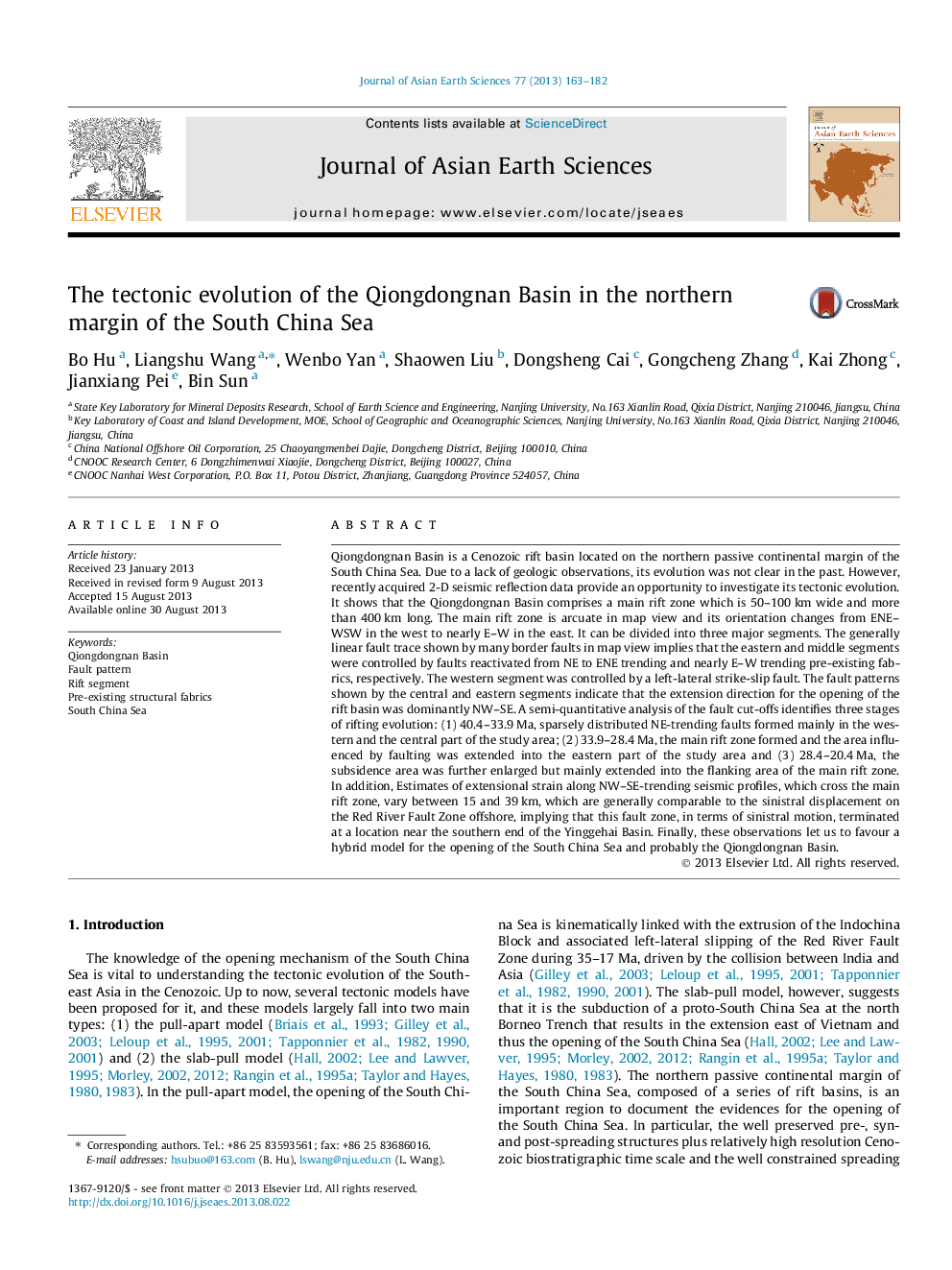| Article ID | Journal | Published Year | Pages | File Type |
|---|---|---|---|---|
| 6444561 | Journal of Asian Earth Sciences | 2013 | 20 Pages |
Abstract
Qiongdongnan Basin is a Cenozoic rift basin located on the northern passive continental margin of the South China Sea. Due to a lack of geologic observations, its evolution was not clear in the past. However, recently acquired 2-D seismic reflection data provide an opportunity to investigate its tectonic evolution. It shows that the Qiongdongnan Basin comprises a main rift zone which is 50-100Â km wide and more than 400Â km long. The main rift zone is arcuate in map view and its orientation changes from ENE-WSW in the west to nearly E-W in the east. It can be divided into three major segments. The generally linear fault trace shown by many border faults in map view implies that the eastern and middle segments were controlled by faults reactivated from NE to ENE trending and nearly E-W trending pre-existing fabrics, respectively. The western segment was controlled by a left-lateral strike-slip fault. The fault patterns shown by the central and eastern segments indicate that the extension direction for the opening of the rift basin was dominantly NW-SE. A semi-quantitative analysis of the fault cut-offs identifies three stages of rifting evolution: (1) 40.4-33.9Â Ma, sparsely distributed NE-trending faults formed mainly in the western and the central part of the study area; (2) 33.9-28.4Â Ma, the main rift zone formed and the area influenced by faulting was extended into the eastern part of the study area and (3) 28.4-20.4Â Ma, the subsidence area was further enlarged but mainly extended into the flanking area of the main rift zone. In addition, Estimates of extensional strain along NW-SE-trending seismic profiles, which cross the main rift zone, vary between 15 and 39Â km, which are generally comparable to the sinistral displacement on the Red River Fault Zone offshore, implying that this fault zone, in terms of sinistral motion, terminated at a location near the southern end of the Yinggehai Basin. Finally, these observations let us to favour a hybrid model for the opening of the South China Sea and probably the Qiongdongnan Basin.
Related Topics
Physical Sciences and Engineering
Earth and Planetary Sciences
Geology
Authors
Bo Hu, Liangshu Wang, Wenbo Yan, Shaowen Liu, Dongsheng Cai, Gongcheng Zhang, Kai Zhong, Jianxiang Pei, Bin Sun,
